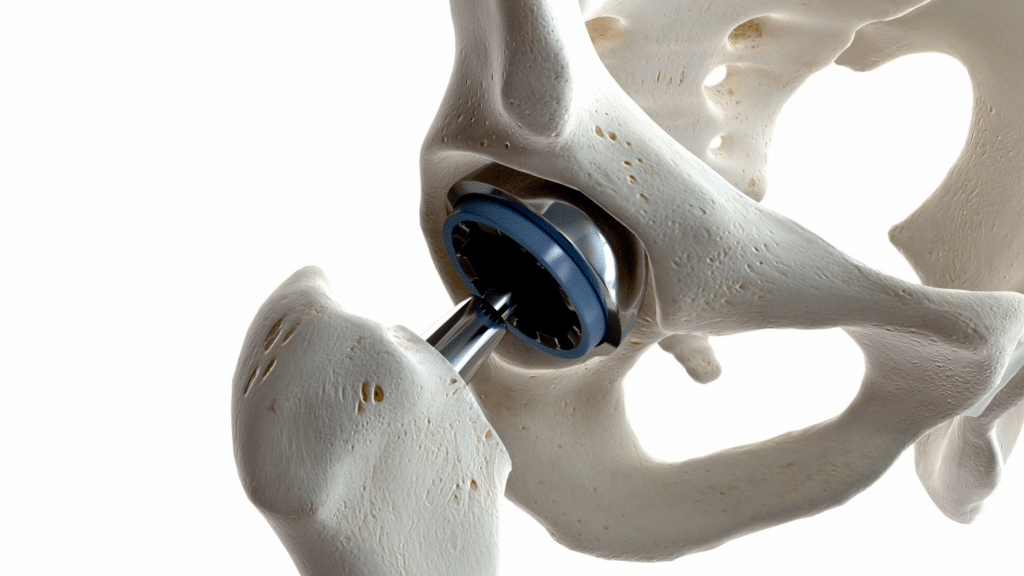Orthopaedics, also known as orthopaedic surgery, is a medical specialty that focuses on the diagnosis, treatment, and prevention of injuries and diseases affecting the musculoskeletal system. This complex system comprises bones, joints, ligaments, tendons, muscles, and nerves, which collectively enable movement, provide support, and maintain the body’s structural integrity. From newborns with congenital deformities to older individuals with arthritis, orthopaedic surgeons care for patients of all ages and provide a wide range of treatments, including medication, surgery, rehabilitation, and preventive measures.
Understanding the Musculoskeletal System
The musculoskeletal system plays a vital role in our everyday lives, allowing us to perform various activities such as walking, running, lifting, and even sitting. Bones provide a framework for the body, protecting internal organs and supporting the body’s weight. Joints act as connections between bones, enabling movement and flexibility. Ligaments are strong bands of connective tissue that hold bones together, while tendons connect muscles to bones, allowing for the transmission of forces and movement. Muscles contract and relax to generate movement, while nerves transmit signals between the brain and muscles, controlling voluntary and involuntary actions.
What is Orthopaedics? The Subspecialities:
Orthopaedic surgeons may specialize in specific areas of the musculoskeletal system, focusing on particular conditions or types of surgery. Some common orthopaedic subspecialties include:
Foot and Ankle
Orthopaedic surgeons specializing in foot and ankle conditions diagnose and treat a wide range of issues, such as fractures, sprains, arthritis, and deformities. They may employ various non-surgical treatments, such as medication, physical therapy, and orthotics, or perform surgical procedures like ankle arthroscopy, bunion correction, or ankle fusion.
Hand and Wrist
Hand and wrist surgeons are experts in diagnosing and treating conditions affecting the hand, wrist, and forearm. They manage fractures, carpal tunnel syndrome, tendon injuries, and other hand-related issues. Treatment options range from conservative approaches, such as medication and splinting, to advanced surgical techniques, including joint replacement and microsurgery.
Hip Replacement and Reconstruction
Orthopaedic surgeons specializing in hip replacement and reconstruction focus on restoring hip function and relieving pain caused by arthritis or hip fractures. They perform procedures like total hip replacement, hip resurfacing, and hip revision surgery to enhance mobility and improve quality of life for their patients.
Knee Replacement and Reconstruction
Knee replacement and reconstruction specialists treat knee conditions, including osteoarthritis, ligament injuries, and meniscus tears. They utilize various techniques, such as total knee replacement, partial knee replacement, and arthroscopic procedures, to alleviate pain, improve mobility, and restore knee function.
Orthopaedic Trauma
Orthopaedic trauma surgeons are trained to manage acute injuries to the musculoskeletal system, including fractures, dislocations, and complex trauma cases. They provide emergency care, perform surgeries to realign and stabilize bones, and coordinate rehabilitation to promote healing and restore function.
Pediatric Orthopaedic Surgery
Pediatric orthopaedic surgeons specialize in the diagnosis and treatment of musculoskeletal conditions in children, ranging from congenital deformities to growth-related issues and injuries. They employ a multidisciplinary approach, using both non-surgical and surgical interventions tailored to the specific needs of young patients.
Shoulder and Elbow
Orthopaedic surgeons specializing in shoulder and elbow conditions diagnose and treat a wide range of issues, such as rotator cuff tears, shoulder instability, and tennis elbow. They offer non-operative treatments like physical therapy and injections, as well as advanced surgical techniques such as arthroscopy, shoulder replacement, and elbow ligament reconstruction.
Spine
Spine surgeons focus on the diagnosis and treatment of conditions affecting the neck and back. They manage spinal deformities, herniated discs, spinal stenosis, and other spinal disorders. Treatment options include both non-surgical approaches, such as medication and physical therapy, and surgical interventions like spinal fusion, disc replacement, and minimally invasive procedures.
Sports Medicine
Sports medicine specialists provide comprehensive care for athletes of all levels, addressing musculoskeletal injuries and optimizing performance. They diagnose and treat sports-related conditions, including sprains, strains, fractures, and ligament tears. Treatment may involve non-surgical interventions, such as rehabilitation and injections, or surgical procedures, such as arthroscopy and ligament reconstruction.
Education and Training of Orthopaedic Surgeons
Orthopaedic surgeons undergo extensive education and training to develop the necessary skills and knowledge to provide specialized care. Their educational journey typically includes:
- Four years of undergraduate study in a college or university, focusing on pre-medical coursework.
- Four years of medical school, where they acquire a deep understanding of human anatomy, physiology, and medical principles.
- Five years of orthopaedic residency training, during which they gain hands-on experience in diagnosing and treating various orthopaedic conditions.
- Additional fellowship training, lasting one or more years, in a specific subspecialty area to enhance expertise in a particular field.
After completing their formal education and training, orthopaedic surgeons must pass rigorous certifying examinations administered by organizations such as the American Board of Orthopaedic Surgery (ABOS), American Osteopathic Board of Orthopaedic Surgery (AOBOS), or the Royal College of Physicians and Surgeons of Canada. They are required to participate in a Maintenance of Certification (MOC) process, engaging in continuous learning and professional development activities to stay up-to-date with the latest advancements in orthopaedic care.
When to Seek Orthopaedic Care
Orthopaedic care may be necessary in various situations, depending on the severity and nature of the musculoskeletal condition. While primary care physicians can address some musculoskeletal symptoms, it is often beneficial to consult with an orthopaedic specialist for a more accurate diagnosis and appropriate treatment. Some common reasons to seek orthopaedic care include:
- Chronic or persistent pain lasting more than three months, affecting daily function and quality of life.
- Limited range of motion or difficulty performing routine activities.
- Symptoms that significantly impact mobility and physical abilities.
- Acute injuries that fail to respond to simple measures such as rest, ice, or over-the-counter pain medications.
- A previous recommendation for surgery or the need for a second opinion.
It is important to note that consulting with an orthopaedic surgeon does not automatically result in surgery. Orthopaedic surgeons are highly skilled in assessing whether surgical intervention is necessary, and they explore all possible treatment options before considering surgery. Their goal is to provide the most effective and appropriate care to optimize patient outcomes.
The Orthopaedic Surgery Process
When undergoing orthopaedic surgery, several essential steps are involved, ensuring proper evaluation, preparation, procedure, and postoperative care.
Initial Consultation and Evaluation
Before undergoing orthopaedic surgery, patients meet with an orthopaedic surgeon for an initial consultation and evaluation. During this visit, the surgeon reviews the patient’s medical history, performs a physical examination, and may request imaging tests, such as X-rays or MRI scans, to gather additional information about the condition.
The surgeon takes the time to explain the diagnosis, discuss the available treatment options, and outline the risks, benefits, and potential complications associated with the surgery. Patients are encouraged to ask questions and clarify any concerns they may have during this consultation.
Scheduling the Surgery
The timing of orthopaedic surgery depends on various factors, including the urgency of the condition, the availability of surgical facilities, and the patient’s preference. In emergency cases, such as severe fractures or dislocations, immediate surgery may be necessary. Elective procedures, on the other hand, can be scheduled in advance, allowing patients and surgical teams to prepare adequately.
During the consultation, the surgeon and patient will discuss the timeline for the surgery and determine the most suitable date based on mutual availability and medical considerations.
Day of Surgery
On the day of surgery, patients arrive at a healthcare facility, typically a hospital, where they are prepared for the procedure. This preparation involves taking vital signs, administering intravenous fluids or medications, and ensuring the patient is appropriately dressed in a hospital gown. The healthcare team then transports the patient to the operating room.
Once in the operating room, an anesthesiologist administers anesthesia to induce a state of unconsciousness and ensure the patient feels no pain during the procedure. The surgeon then proceeds with the surgery, following a carefully planned approach tailored to the patient’s specific condition.
The surgical steps vary depending on the nature of the procedure. For instance, in cases of fractures, the surgeon may use screws, pins, rods, or plates to realign and stabilize the bones. Ligament injuries may require repair or reconstruction using healthy tissue from the patient’s body or a donor graft. In some instances, joint damage caused by arthritis can be addressed by placing metal or plastic caps on the affected bone.
Throughout the surgery, the surgeon adheres to the predetermined plan discussed during the initial consultation, ensuring the best possible outcome for the patient.
Postoperative Care and Recovery
After orthopaedic surgery, patients are moved to a recovery area where they are closely monitored as the effects of anesthesia wear off. Depending on the complexity of the surgery and the patient’s condition, they may either be discharged after a few hours in the recovery room or kept overnight for observation.
Upon leaving the hospital, patients receive detailed instructions on caring for their surgical site, managing pain, and engaging in activities during the recovery period. Adequate rest is crucial during this time, and patients are advised to enlist the support of friends or family members to assist with daily tasks until they regain their normal abilities.
The duration of the recovery period varies depending on the type of surgery and individual factors. Patients should consult their surgeon regarding the resumption of regular activities and follow the recommended rehabilitation program, which may include exercises, physical therapy, or other modalities to restore strength and function.
Follow-up appointments are scheduled to monitor the healing progress and address any concerns or complications that may arise. Imaging tests, such as X-rays, may be performed to assess the status of the musculoskeletal system, and additional treatments, such as physical therapy, may be recommended to optimize recovery.
Conclusion
Orthopaedics is a specialized field of medicine dedicated to diagnosing, treating, and preventing conditions and injuries affecting the musculoskeletal system. Orthopaedic surgeons undergo extensive education and training to provide comprehensive care, with various subspecialties focusing on specific areas of the body.
Seeking orthopaedic care is essential for individuals experiencing chronic pain, limited mobility, or acute injuries that do not respond to conservative measures. Orthopaedic surgeons employ a range of treatment options, including medication, physical therapy, and surgery, to address musculoskeletal conditions and optimize patient outcomes.
By understanding the role of orthopaedic surgeons and the process of orthopaedic surgery, individuals can make informed decisions about their musculoskeletal health and seek appropriate care when needed. Whether it’s a hip replacement, ACL surgery, or the treatment of a sports-related injury, orthopaedic surgeons are dedicated to helping patients regain their mobility, alleviate pain, and improve their overall quality of life.
Advanced Orthopaedic Associates has specialists for all types of orthopaedic injuries and conditions. Learn more about by filling out the link below.

